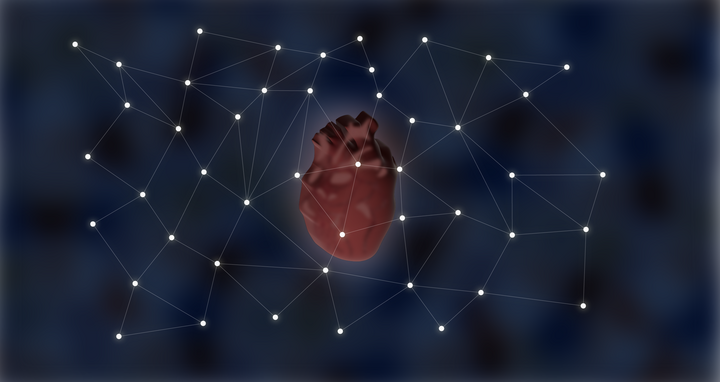How cells make the heart beat
Cardiovascular disease is a leading cause of chronic illness and death worldwide. In Germany, heart failure is the most common cause of hospitalization. It is often associated with atrial fibrillation and increases the risk of sudden cardiac death.
The study, published today in “Nature”, is part of the international "Human Heart Cell Atlas", which maps all cell types in the human heart. Researchers from the Wellcome Sanger Institute, Imperial College London, the Max Delbrück Center in Berlin and the German Centre for Cardiovascular Research have now described a total of 75 cell states for eight regions of the heart, spatially mapping cells and gene expression in healthy adult hearts with unprecedented accuracy. This knowledge may hold the key to understanding how myriad cells coordinate their heart beat and pump.
Measuring pacemaker cells for the first time
The spatial arrangement of cells in heart tissue is crucial. It affects whether a connective tissue cell talks to a heart muscle cell or an immune cell. This can have significant consequences for the function of the heart.
The study included data from 22 organ donors aged 40 – 75 years. The researchers used cutting-edge methods such as single-cell sequencing, which determined which genes are being read for each individual cell. Using spatial transcriptomics, they were able to understand where individual cells are located in the heart and how they communicate. "The spatial arrangement of cells in heart tissue is crucial. It affects whether a connective tissue cell talks to a heart muscle cell or an immune cell. This can have significant consequences for the function of the heart," says Professor Norbert Hübner from the Max Delbrück Center, who is co-author of the study.
For the first time, the British-German team also profiled the cells of the cardiac conduction system. This includes pacemaker cells that generate electrical impulses and determine the heart rate. If the conduction system is disturbed, the heart's rhythm becomes out of sync, which can lead to fatal cardiac arrhythmias.
The researchers made an unexpected discovery: pacemaker cells work together with neighboring glial cells. Glial cells are mainly found in the brain, where they support nerve cells, but have rarely been studied in the heart. It turns out that glial cells are part of the heart's conduction system and communicate with pacemaker cells through previously unknown signalling pathways. Apparently, pacemaker cells release the neurotransmitter glutamate, a process that has not been previously described.
Another important finding of the study is the spatial resolution of immune cells in the heart: plasma cells in the epicardium, the outermost layer of the heart, form immune niches that may contribute to the defense against infection.
Early warning signs of heart failure
The researchers also discovered something that could be interpreted as an early warning sign of heart failure. They found that cardiomyocytes in the heart ventricles had a gene expression profile typical of stress and produced a substance called brain natriuretic peptide (BNP). BNP is a biomarker that is used by physicians to detect heart failure. However, it is not known which cell population in the heart produces it. When researchers compared their results with publicly available data from diseased hearts, they found that these cell types were more abundant in healthy people and could serve as an early warning signal for heart failure.
The team also presented a new tool called Drug2cell, which uses single cell profiles stored in the ChEMBL database, as well as drug-target interactions, to provide insights into how different drugs affect the conduction system and heart rate. For example, researchers have identified a previously unknown side effect of a diabetic drug (GLP-1) on pacemaker cells.
The research was funded by the British Heart Foundation and the German Centre for Cardiovascular Research.
Text: Wellcome Sanger, DZHK
Further information
- Heart Cell Atlas
- An in-depth atlas of the heart
- Not all hearts are the same
- A cell atlas of the pediatric heart
- How pathogenic gene variants lead to heart failure
Literature
Kanemaru, K., Cranley, J., et al. (2023): „Spatially resolved multiomics of human cardiac niches“. Nature. DOI: 10.1038/s41586-023-06311-1






